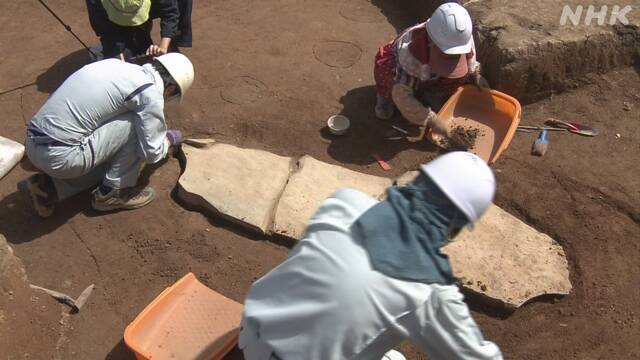At the Yoshinogari site in Saga Prefecture, where the remains of a large-scale Kango settlement in the Yayoi period remain, a part of a tomb believed to be from the late Yayoi period has been unearthed, and experts say that it is likely that the grave of a person of considerable status will be the grave of a person of considerable status, and if further investigation is carried out, it may be an excavation of great historical significance."
At the Yoshinogari site, just west of the "North Mound Tomb", which is said to be the tomb of successive kings, a place called "mystery area" that was untouched despite attracting attention for valuable discoveries, large-scale excavations have been conducted for the first time in 10 years since last year.
The study found four flat stones side by side last month.
The total length of the four sheets is about 4 meters, and according to Saga Prefecture, which is conducting the survey, it is the "lid" of the grave.
It is believed to be the lid of the tomb of an influential person from the late Yayoi period, from the 4st century to the 2rd century, and there are countless symbols on the surface that look like "×" intersecting lines, and it is believed that it was given with some intention when burial.
At the Yoshinogari site, tombs of kings from the middle of the Yayoi period have been found so far, but this is the first time that they are tombs of influential people in the late Yayoi period, where the evil horse kingdom is said to have existed.
Archaeologist Chuhei Takashima, who has been involved in the excavation of the Yoshinogari site for many years, pointed out that "it is the highest in the 'mystery area' and is likely to be the grave of a person of considerable status, which is located in a place with a good view," and said, "If we investigate further, it may be an excavation that has great historical significance in understanding the state of politics at that time."
Saga Prefecture plans to investigate the inside of the grave in the future, and it will be interesting to see if grave goods can be found.

